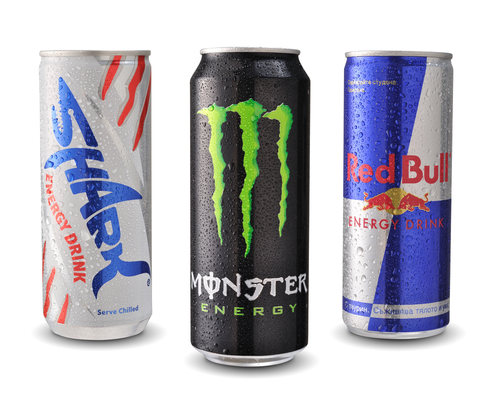Olympic Sports Nutrition Advice For Everyone
By Dan Peterson, TeamSnap's Sports Science Expert.
Right up there with technical skills, physical conditioning and tactical education, an athlete needs the right nutrition to get through both daily training and game day. Each sport has slightly different requirements for calories, nutrient balance and energy requirements to build the type of body that can respond to the demands of the activity. No one knows this better than the Team USA athletes at the Sochi Winter Olympics and their nutritionists who have analyzed and prepared just the right mix of food and hydration given on a precise schedule. Let’s take a closer look at the requirements for two sports, alpine skiing and bobsled racing.
An athlete’s complete nutrition plan has to consider four key components: ideal body composition, physiology, energy requirements and common problems faced by each sport’s athletes. There is no “one size fits all” solution.
 Since Olympians come in all shapes and sizes and have different goals, they do not all have the same requirements for nutrition,” said United States Olympic Committee Sports Dietitian, Jennifer Gibson. “A figure skater trying to maintain a lean physique may consume 1,800 to 2,000 calories daily whereas a cross-country skier with a huge energy expenditure may consume over 4,000 calories per day. It differs from athlete to athlete, but typically they eat four to six meals per day, evenly spaced out, and no more than four hours apart.”
Since Olympians come in all shapes and sizes and have different goals, they do not all have the same requirements for nutrition,” said United States Olympic Committee Sports Dietitian, Jennifer Gibson. “A figure skater trying to maintain a lean physique may consume 1,800 to 2,000 calories daily whereas a cross-country skier with a huge energy expenditure may consume over 4,000 calories per day. It differs from athlete to athlete, but typically they eat four to six meals per day, evenly spaced out, and no more than four hours apart.”
According to the USOC nutrition team, an alpine skier, like Julia Mancuso, has energy requirements closer to an endurance athlete, requiring 4-6 hours per day of training often at high, cold altitudes. She recently outlined her typical day of eating. Competitive skiers are getting leaner and heavier with a mix of fast twitch and slow twitch muscle fibers, mostly in the thighs. Glycogen, the main fuel source, is depleted quickly and needs to be replenished each hour with carbohydrates, protein and beverages high in electrolytes. Not getting enough glycogen and hydration can contribute to post-workout injuries as muscles try to recover from the day’s stress.
Speaking of stress, the burden skiers put on their bodies during competition at high altitudes can increase cortisol and deplete iron in the bloodstream. This double dose can take a hit on an athlete’s immune system, especially if travelling overseas and being exposed to new environments. Eating foods rich in antioxidants and taking iron supplements prepares the body to take on the rigors of the season.
On the opposite extreme of a long, downhill ski run is the explosive start of a bobsled race, followed by a “sit down and hang on” trip down the track. For racers, like recently converted hurdler Lolo Jones, a high power to weight ratio with a strong upper body benefits the initial push-off of the sled at the top of the hill. The debate then turns to whether the athletes’ total mass should be lighter to help up top or heavier to benefit from gravity pulling them down the hill.
Considered more of a sprint event, athletes require less energy on competition days but more calories during training to get through their grueling, muscle-building workouts. That was one of the first lessons that Jones learned when she decided to tryout for the two-man bobsled team. Her diet doubled in calories to fuel her extensive weight training routines.
"As a track athlete you're more like a greyhound dog," said Jones during a recent interview. "As a bobsledder you're more like a Rottweiler or a pit bull. You're more bulky."
Overall, the key for any athlete is a balanced diet with some customization based on the needs of the sport. As Allen Tran, Team USA’s top chef summarized in an SI interview, “When it comes to nutritional needs, athletes definitely need to incorporate a combination of lean protein, complex carbohydrates, healthy fats, and nutrient-dense fruits/veggies. That's the nutritional base for many of my meals -- but every sport gets a different ratio of nutrients. For example, the alpine skiers need a different dietary regimen from the cross-country skiers. Strength activities demand more protein and moderate carbohydrate amounts, while endurance activities need more carbs delivered steadily to fuel the activity all the way through. It definitely keeps it interesting in the kitchen.”
Good advice for all athletes, whether you’re going for gold or just going to the gym.
NEW! Free Sports Organization Resources
All of TeamSnap's ebooks, articles, and stories in one place. Access Now
Similar Articles:
Top 5 Breakfast Ideas For Kids and Young Athletes
They say that breakfast is the most important meal of the…
Read More

The End of the Pasta Party: Why a Low-Carb, High-Fat Diet is Best for Athletes
By Dan Peterson, TeamSnap's Sports Science Expert …
Read More

Do Energy Drinks Boost Sports Performance?
By Dan Peterson, TeamSnap's Sports Science Expert …
Read More
